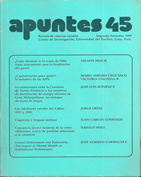The controversy between the Committee of Electric Tariffs and electric distribution firms in Metropolitan Lima: A game theory approach
DOI:
https://doi.org/10.21678/apuntes.45.487Keywords:
Peru, electric power, energy industry, game theory, tariffs, New Replacement Value, Committee of Electric Tariffs, Nash Equilibrium, Law of Electrical Concessions, incentives, regulationAbstract
In September 1997, CTE set a new distribution rate after estimating the investment value, called New Replacement Value (VNR) for power distribution utilities in Peru. This estimation is an indispensable tool to set rates for 1997-2001 but raised a controversy between CTE and the regulated companies that reached the judiciary and generated a series of contradictory opinions on rate setting, regulation methods and LCE opinions.
A theoretical model of game theory show that if the agents acting maximizing profits, the Nash equilibrium will be appropriate by the LCE. Although, if there are exist a deviation by "populist" causes the equilibrium will be inefficient for the user but harmful for the company. In the next period, the companies will have incentives for underinvestment or recoil of the business but will never invest efficiently.
We concluded that the important question is not if the regulatory entity is independent or not. The most important is that the government provides a believable commitment, as much to consumers as to investors for the development of the sector.
Downloads
Downloads
Published
How to Cite
Issue
Section
License
Apuntes publishes all its articles and reviews under a Creative Commons Attribution (CC BY 4.0) license with the objective of promoting academic exchange worldwide. Therefore, articles and book reviews can be distributed, edited, amended, etc., as the author sees fit. The only condition is that the name of the author(s) and Apuntes. Revista de Ciencias Sociales (as the publisher) be cited.



.jpg)
